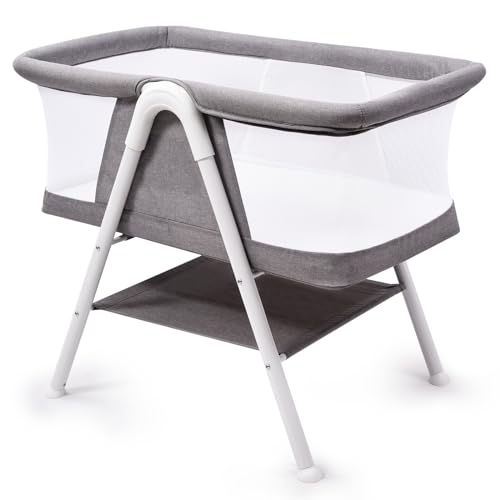Everything You Need To Know About Baby Cot To Bed Dos And Don'ts
Transitioning from Baby Cot to Bed: A Comprehensive Guide for Parents
The journey from a baby cot to a bed marks a considerable milestone in a kid's development. It symbolizes independence and an action toward maturing. Nevertheless, this transition can frequently be daunting for both parents and kids. Comprehending the process, the best timing, and how to make the shift smoother can substantially help in this journey. This post checks out the basics to consider when transitioning your kid from a cot to a bed, consisting of common FAQs, ideas, and a structured plan to make sure the process is as smooth as possible.
Why Transition from a Cot to a Bed?
Developmental Milestones
Transitioning to a bed is usually prompted by several factors:
Physical Growth: As children grow, they outgrow their cots. The typical size for a convertible cot is generally indicated for infants as much as 3 or 4 years old.
Cognitive Development: As toddlers end up being more curious and familiar with their environments, they might try to climb up out of their cots, presenting security risks.
Potty Training: Once a child is potty trained, they might need much easier access to the restroom, which a bed can help with.
Siblings: The arrival of a brand-new sibling can also demand this shift, as the cot might require to be freed up.
When to Make the Transition
There is no one-size-fits-all answer to when a child ought to transition from a cot to a bed. Nevertheless, here are some indications that it might be time:
- Climbing Out: If the child is attempting to climb out regularly.
- Age Consideration: Many experts advise this shift around the age of 2 to 3 years, although every kid is special.
- Required for Independence: Children may express a desire for a big-kid bed.
Kinds Of Beds Suitable for Toddlers
Not all beds are developed equivalent when it pertains to young kids. Here's a breakdown of ideal bed types:
Bed Type
Description
Pros
Cons
Young child Bed
Smaller, lower to the ground, typically with side rails.
Size-appropriate for young children; stability.
Restricted lifespan as they outgrow rapidly.
Single Bed
Requirement size bed implied for older children.
Lasts longer; can be utilized for many years.
May be too huge for a toddler; risk of falling.
Convertible Crib
Crib that transforms into a toddler bed.
Versatile; conserves money in the long run.
Can be costly; some might not offer full-sized options.
Loft Bed
Raised bed with area beneath for play or storage.
Takes full advantage of space; fun for kids.
Not ideal for very children; safety concerns.
Steps to Transition Smoothly
Transitioning to a bed can be simplified with mindful planning. Here's a detailed guide:
1. Prepare the Space
- Select a Location: Decide where the bed will be put.
- Childproof the Room: Since kids are naturally curious, ensure that furnishings is steady, sharp edges are covered, and unsafe products run out reach.
- Keep Familiar Items: Retain preferred toys and bed linen to provide comfort in the new environment.
2. Present the Bed
- Include Your Child: Let your child aid select their bed or bed linen to produce enjoyment.
- Discuss the Transition: Make them understand that they are becoming a huge kid by having a big-kid bed. Use motivating language.
3. Make the Swap
- Bedtime Routine: Keep the bedtime routine constant. This produces familiarity and comfort during the transition.
- Assistance: Offer them reassurance but avoid being excessively protective; it's crucial to motivate self-reliance.
4. Address Fears and Concerns
- Speak about Fears: Children might have fears of falling or the dark; go over these honestly.
- Enhance Safety: Use guard rails on the bed at first and describe what to anticipate during the night.
5. Display and Adapt
- Be Patient: It may require time for your child to change totally.
- Stay Consistent: Maintain the nighttime routine, even when problems emerge.
Frequently Asked Questions Regarding Transitioning from Cot to Bed
Q1: How long does the shift from a cot to a bed generally take?
A1: The shift can differ considerably amongst kids— ranging from a couple of days to a couple of weeks— as they adapt to oversleeping a new area.
Q2: Should I buy an unique young child bed?
A2: Investing in a young child bed can make the transition simpler because they are developed with safety in mind; however, if you choose to go directly to a single bed, that can work too with the ideal safety measures.
Q3: What if my kid keeps getting out of bed?
A3: This is normal! Encourage Baby Cots to stay in bed and establish favorable support by rewarding them for remaining in bed through the night.
Q4: Is it okay to shift to a big bed too early?
A4: Transitioning too early can lead to sleep disturbances. It's vital to examine the preparedness of the kid based on their signs and development.
Transitioning from a baby cot to a bed is a significant action for both kids and parents. With thoughtful preparation and understanding of the kid's requirements, moms and dads can make the shift smoother and more enjoyable. By recognizing when to make the shift, comprehending the types of beds available, and maintaining a constant routine, parents can alleviate worries and promote a sense of security for their youngster throughout this amazing new chapter. Eventually, every child is different, and patience is key in making this journey a positive experience.
